Emergency on Channel 4
At the major trauma centre at St Mary's Hospital, expert trauma specialists help patients with the most severe injuries. Meet the teams featured in "Emergency," the groundbreaking documentary aired on Channel 4 in February 2022.
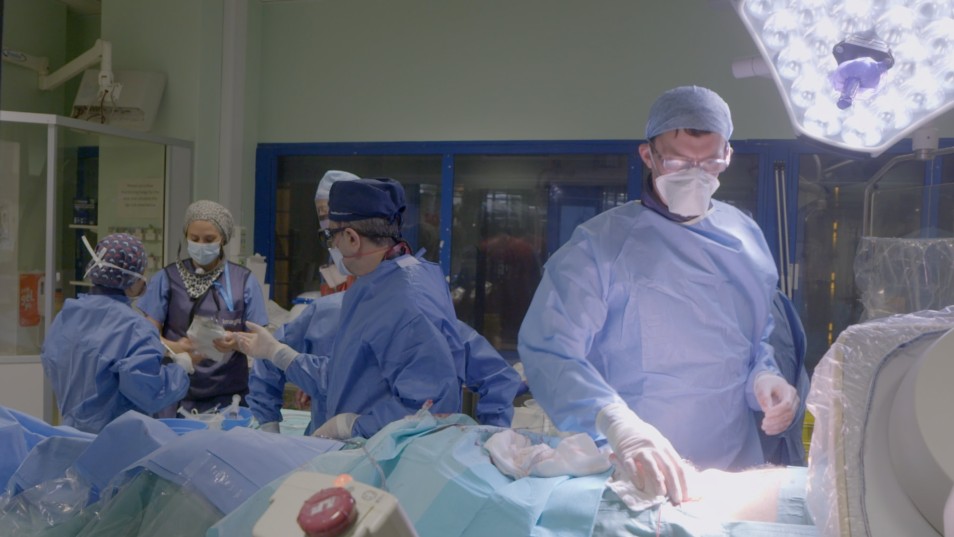
“Every day there will be someone else. As we speak, there will be somebody else who is having the worst day of their lives, someone who we, as a team, will help,” says Mr Shehan Hettiaratchy, consultant trauma surgeon. “To try and help them come through that worst day and the following days, to help them rebuild their lives is a real privilege.”
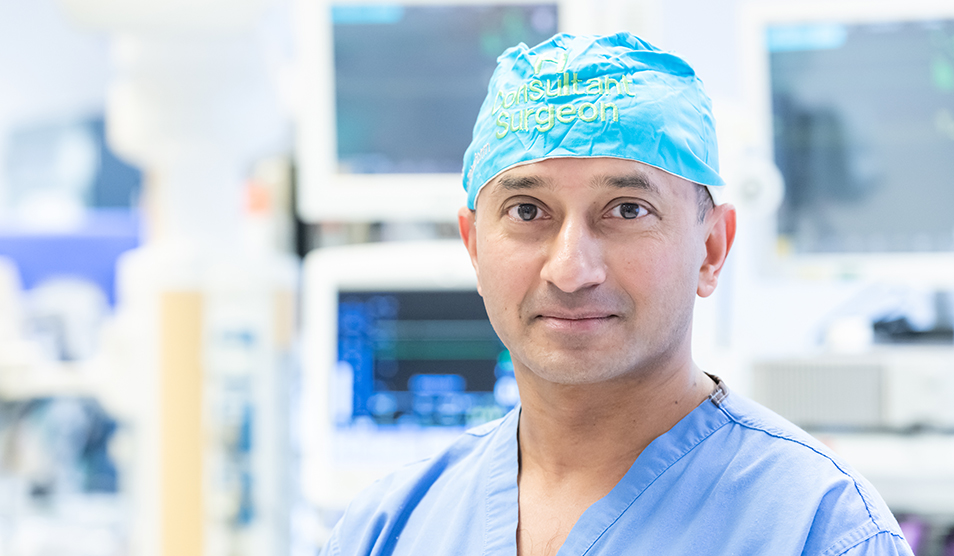
Shehan leads the major trauma centre at Imperial College Healthcare, part of the pan-London major trauma network launched in 2010 to coordinate care for traumatic injuries across the capital. It was the first of its kind in the UK. Survival rates for traumatic injuries in the UK had been exceptionally low compared to the rest of western Europe, the US and Australia. With the city still reeling in the wake of terrorist incidents and preparing for the upcoming London 2012 Olympics, a system to efficiently deal with mass casualties and individuals suffering traumatic injuries was needed to try and drastically improve outcomes.
Mr Shehan Hettiaratchy, major trauma director"To try and help them come through that worst day, to help them rebuild their lives is a real privilege"
The true story of the daily reality in London’s major trauma network is being told in a ground-breaking new documentary on Channel 4 – Emergency – which airs across four consecutive nights at 9pm, starting Monday 28 February (and then on All 4). Filming teams were embedded in major trauma centres across the network, including St Mary’s Hospital, for two weeks in the summer of 2021, capturing the work of the teams 24 hours a day.
“The whole point of the network is not just to save lives, that's just not enough. We want to give people their lives back, which is a much more difficult thing,” says Shehan. “From the moment they are injured to the moment they go back into their life, the major trauma pathway is continuous, with critical elements and teams across the hospitals delivering different but equally important parts of care throughout.”
Major trauma has a strict definition and doctors or ambulance crews must evaluate visible injuries and how they were sustained to decide if a patient has suffered trauma. This can be very difficult when injuries are internal. Whether it’s a road traffic accident, a violent attack or even an elderly person falling over in their own home, teams work through a series of questions about the patient and circumstances and always err on the side of caution in less clear cases.
“The ambulance crews are experts at making decisions but if they're not quite happy, we've got open doors at the major trauma centre. It is much better for a patient to be brought to us because they might have suffered major trauma and for us to decide they’re OK than to have a patient with severe injuries not be brought to the right place.”
Mr Shehan Hettiaratchy, major trauma director"The whole point of the network is not just to save lives, that’s just not enough"
This is where the strength of the whole network comes into action. The less severely injured or those who have injuries that are not immediately life threatening, but also those who may not survive a longer transfer to a major trauma centre can be taken to a smaller trauma units. These form part of London’s network and help fill up the geographical gaps between the larger regional centres.
If a patient’s condition changes or once they have been stabilised, they can then be moved to a trauma centre, where all of the doctors needed to treat them – including specialists like neuro- and cardiothoracic surgeons – can be found and co-ordinated in one place.
“The units have two roles, which are both very difficult,” Shehan explains. “One is dealing with people who are basically dying, keeping them alive so we can treat the rest of their injuries. Then they deal with patients who have less severe trauma that can be managed without specific specialities – it’s two ends of the spectrum.”
The key ingredients for a good trauma outcome are expertise and rapid access to the right treatments. Most of the time, this involves surgery or involve interventional radiology in the first instance but, whatever happens, a multidisciplinary team of experts is always needed, and quickly.
“You need to have multiple different teams all working in the right kind of order. Which is the most important thing, is it the brain injury? Is it the bleeding from the liver or is it their pelvic injury? And you are working out which is the thing that needs to be done next for us to save that person's life.” says Shehan. “The team has to cross boundaries and pull together to work cohesively to make that one patient better.”
Once patients have been physically ‘fixed’ their journey on the major trauma pathway does not end. Specialist rehabilitation teams will support patients to walk again, learn to do things they may now struggle with and also support their mental health as they come to terms with a traumatic event and significant changes to their life.
But Shehan thinks the role patients play in their own recovery is more important than anything the major trauma teams can do. “Their lives will never be the same again, but our aim is trying to give back as much of their life as possible.
“I treated an elderly woman who was in a road traffic collision and sadly lost her leg. I had to tell her that, given her age, it was likely she would be in a wheelchair for the rest of her life. She said ‘no, I'm going to walk’ and three months later, she walked into my clinic, and said ‘I told you I was going to walk.’ I was so glad she proved me wrong.”
Poly-trauma: Where do you start when everything is urgent?
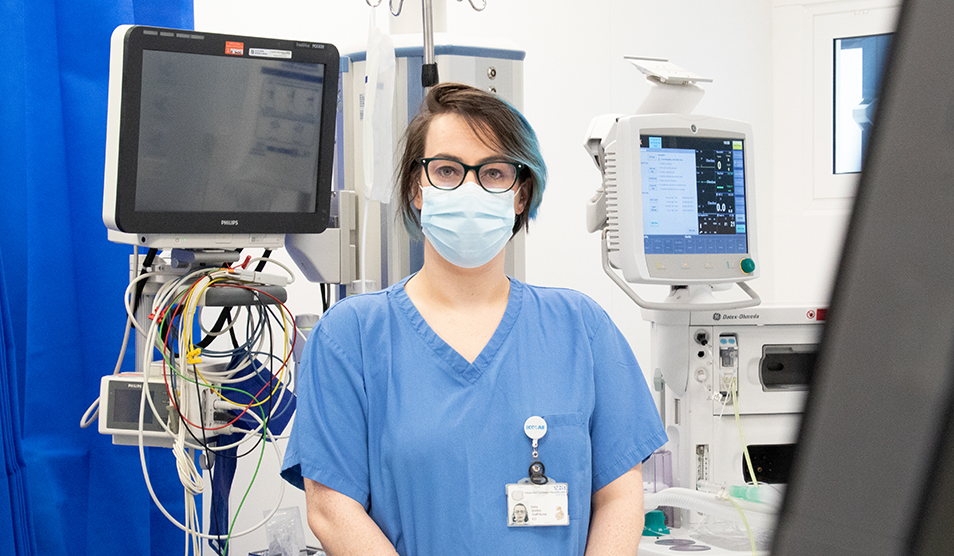
Often major trauma patients have multiple serious and potentially life-threatening injuries. It is up to trauma teams to decide which injuries to treat first and then stabilise them to maximise the patient’s chance of a good recovery. This is known as ‘poly-trauma’.
Broken bones or surface injuries may mean a patient is losing lots of blood or experiencing extreme pain, but very often the force of their accident means that internal injuries or internal bleeding is far more serious. It is a race against time for the major trauma and emergency department teams to assess and identify all their injuries, so they can prioritise and increase the chance of survival.
“Any one of those injuries on their own is bad news but can be relatively simple to manage. When you put them all together in one patient the complexity and therefore the risk to their life really goes up,” explains Shehan. “When we have patients with poly-trauma, often they're really unwell and the things we do are really time critical."
To save time, trauma and emergency teams will book scans and blood tests under a fake name as soon as they get the call from the ambulance service. This enables the team to get to work as soon as the patient comes through the doors.
Bella Stretton, senior staff nurse, emergency department"The sooner we know what is happening on the inside, the sooner we can prioritise the injuries, treat them and improve the chance of a good outcome"
“Most major trauma patients have a usual set of tests and a CT scan of their body,” says Bella Stretton, senior staff nurse in the emergency department at St Mary’s. “When a patient has multiple injuries, we may organise other x-rays or ultrasounds but all of this can be arranged before they get to us. We have the stickers ready for bloods and can get them straight to the lab for analysis. The sooner we know what is happening on the inside, the sooner we can prioritise the injuries, treat them and improve the chance of a good outcome.”
Bella recalls a young patient who had fallen from a height: “He was screaming in pain and we knew he had a broken hip but the CT scan showed that he had actually also severed the blood supply between one of the kidneys and the spleen. Spleen injuries can be particularly severe and need to be treated very quickly to avoid organ failure - we would not have known this without a speedy scan and the outcome could have been very different.”
In very severe cases such poly-trauma a radiologist will be called as part of the trauma team to ensure that the scans happen quickly and, depending on the nature of the injuries, the trauma consultant will also refer to colleagues in different specialities to get them involved quickly, sometimes declaring a ‘Code Red’ in the most serious cases, which are very often poly-traumas.
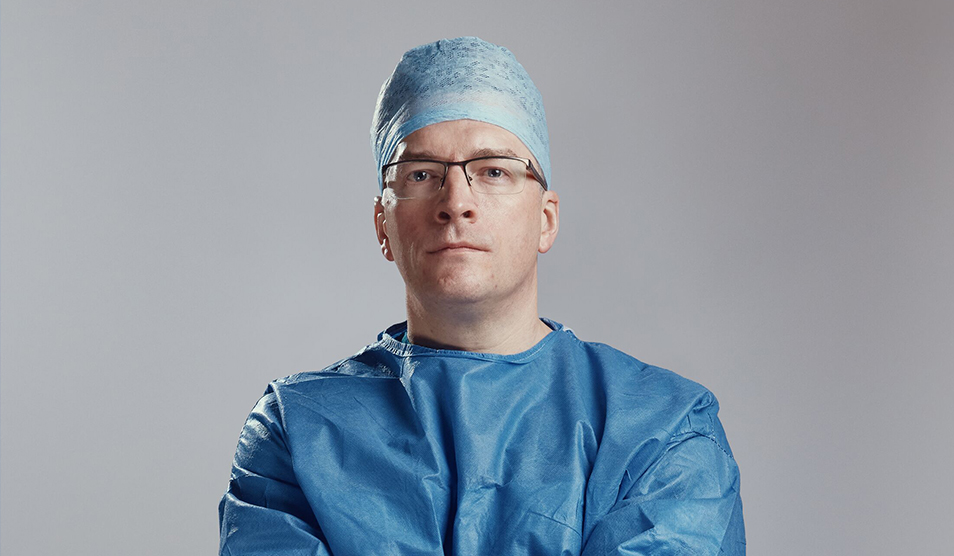
Mr Morgan McMonagle, trauma and vascular surgeon "When you see us come together, that's when you see us at our best. I call it ‘Trauma Justice League’"
For example, a vascular surgeon is vital in the case of a ruptured aorta, as seen in the documentary when Danilo is brought to St Mary’s. The rest of injuries which are not immediately life threatening will be assessed and stabilised to allow the teams dealing with the more serious injuries to treat the patient safely.
“When you see us come together in a major trauma or mass casualty situation, that's when you see us at our best. I call it ‘Trauma Justice League,’ says Mr Morgan McMonagle, trauma and vascular surgeon at St Mary’s.
“The 'Code Red' rota is populated by general and vascular surgeons, who respond to these very sickest patients with multiple injuries, who are critically unwell, typically from bleeding. The ‘Code Red’ surgeon manages all patients with life-threatening bleeding, or those are at risk of losing their entire blood volume within minutes. We must be able to respond rapidly and open any body cavity where there may be major bleeding and this can include the chest, abdomen, pelvis, neck or limbs.”
Every part of the system is activated to give each patient the best possible care. Poly-trauma cases unite experts covering the whole of the body – they all work together to scrutinise scans and blood test results to find and treat every injury possible, giving the patient the best chance of survival and recovery. The process is complex and challenging and can leave families waiting for what feels like a lifetime for news of their loved one’s condition.
“We know it is really difficult for families of patients in the emergency department after a major trauma,” Morgan says. “Sometimes families worry we have forgotten about them but we never have. We’re always doing the absolute best for our patients and the people who love them.”
When a minor fall means major trauma
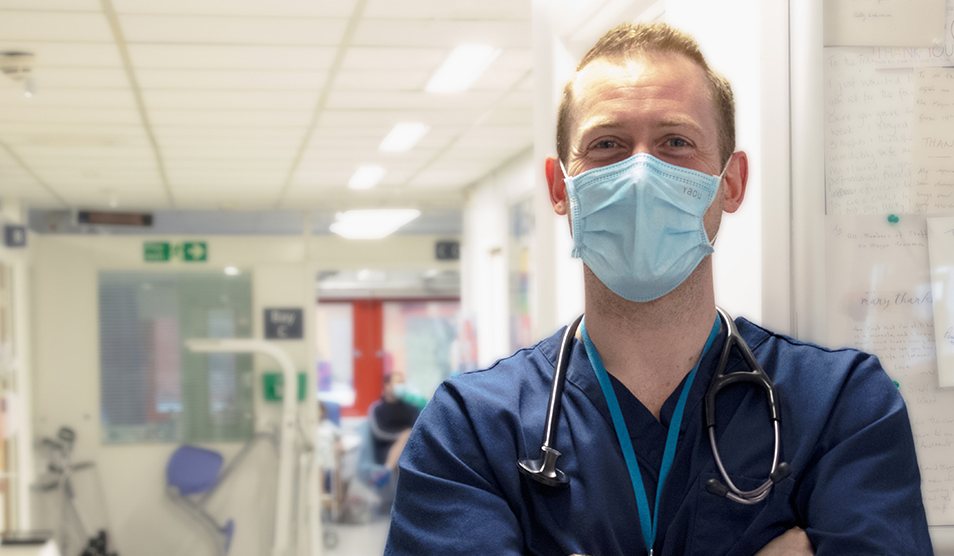
In addition to poly-trauma caused by accidents or acts of violence, major trauma teams see many older people who have suffered from falls. More than half of people admitted to major trauma units are now over the age of 60, many with traumatic injuries from a seemingly innocuous incident.
That’s why the multidisciplinary major trauma team includes a small team dedicated to planning the care of frail, older patients throughout their recovery, led by geriatrician Dr George Peck.
In a person with multiple health conditions, recovery from trauma is an especially complex, delicate process that requires a whole team of specialists to work together. George's team monitors frail patients throughout their whole journey through hospital, working in partnership with trauma, intensive care, and rehabilitation teams as they address each individual patient's needs on their path to recovery.
Dr George Peck, consultant geriatrician"We design a holistic care plan individualised to each patient to minimise the risk of complications that could extend their stay in hospital and give them the best chance of making a successful recovery."
"We usually see patients a day or so after they've been admitted, once all their acute injuries have been identified," George explains. "At that point, we perform what's called a comprehensive geriatric assessment. All our team, including doctors, physio- and occupational therapists, speech and language therapists, nurses and dieticians all work together. We speak with the patient and their family, assess their overall health and activities prior to their injury, and how to best manage their chronic medical conditions alongside their acute injuries. Together, we design a holistic care plan individualised to each patient to minimise the risk of complications that could extend their stay in hospital and give them the best chance of making a successful recovery."
Although older people are much more likely to be frail – or less resilient following injury or illness – frailty isn’t exclusively a condition of the elderly. A long stay in hospital can lead even the healthiest young patients to weaken, which is why a well-rounded, multidisciplinary approach is vital for the most complex patients.
"There is a growing awareness of the value of offering dedicated support to manage frailty in both older and younger patients,” George says. “In addition to working with frail older patients, our team has grown enough that we can see patients with non-trauma spinal and neurological injuries, and younger patients across the board with complex issues or complications that require specialist medical input."
While trauma and intensive care specialists focus on their areas of expertise, a trauma geriatrician can provide continuity to each individual patient throughout their stay in hospital. They can work with all the specialists involved and help ensure each patient gets the right input at the right time throughout their recovery.
“We can help establish what treatments are appropriate for each individual – we work on establishing a prognosis, begin planning for recovery early, and support teams to determine the patient's next steps after leaving hospital. It’s very rewarding to be able to offer that continuity of care, and to support our patients as they progress through their recovery journey.”
Setting goals for recovery
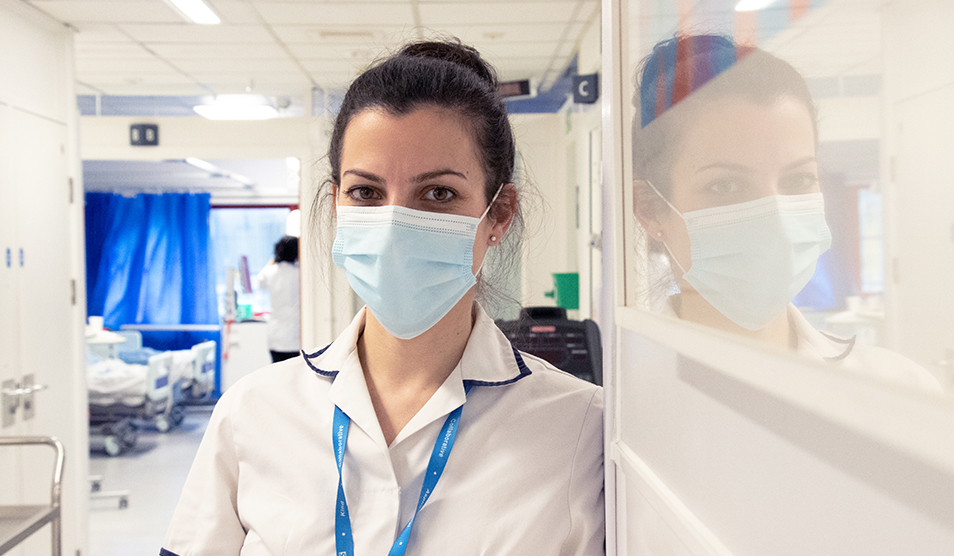
Recovery from traumatic injuries looks different for each individual, but many patients have a long road ahead.
“Once they complete their surgical journey and have their injuries fixed, patients need to start the next part of their pathway: rehabilitation,” says Shehan.
Allied health professionals like physiotherapist Natalie Hildebrand work with patients to try to find a way back to something resembling the life they lived prior to their injury.
Natalie Hildebrand"We see people at their worst to give them the best opportunity to help them work towards their recovery goals"
“We see people at their worst to give them the best opportunity to help them work towards their recovery goals,” Natalie says. “Doctors give patients their lives back; we like to say we can give them quality of life.”
Once a trauma patient has been stabilised and completed any urgent surgeries, Natalie and her colleagues will visit them to discuss their goals and plan a path forward. Assessments begin with understanding the individual’s medical history, their lifestyle, their work and what they liked to do before their injury. From there, physio-, occupational and speech and language therapists help the patient start to think about their recovery goals.
“Each rehabilitation plan is bespoke,” Natalie says. “Two patients may have the same fracture, but depending on their age and health, their rehab plans will be completely different.”
Physiotherapists have specific goals, including preventing secondary complications like chest infections, which are common in individuals with injuries like broken ribs. Speech and language therapists and occupational therapists will also work with patients to support their breathing, communication and language needs, and help them recover essential skills. But beyond that, they consider each individual’s abilities and limitations and set daily and weekly goals accordingly.
“We look at their strength, sensation and how each joint moves. We consider their level of function – can they get out of bed? Are they able to walk, or even go to the toilet by themselves? They must spend a lot of time in bed, so we set small tasks they can achieve every day, which will help them feel more empowered. Over time, these small tasks will grow into bigger ones that will move them towards their recovery goals.”
Therapists like Natalie aim to equip patients with a framework and tools to progress their recovery at their own pace. Ultimately, there won’t be one magic solution to help patients get back to normal, but the rehabilitation team provides support, exercises, plans and resources to set each patient up for success.
“Rehabilitation in our major trauma centre is just the start of the journey,” Natalie says. “We refer patients to their local hospital or rehabilitation centre for on-going care, but it can take time to get the right support. We try to help patients connect with a variety of resources and charity services that can provide practical, emotional and peer support for them and their loved ones."
Patients have to reckon with the fact that success after injury might look rather different to the life they led prior to their trauma experience. The trauma team’s clinical psychologist helps patients navigate these challenges and prepares them for the long road ahead after leaving our hospitals. But in the end, each patient will take the lead in managing their recovery and planning their future.
“We support the patients, but they are the ones who have to pick themselves up and rebuild their lives,” Shehan says. “We are not the solution. Each patient puts their lives back together one brick at a time.”
About this page
- Last updated
- Author Kathryn Cusimano
